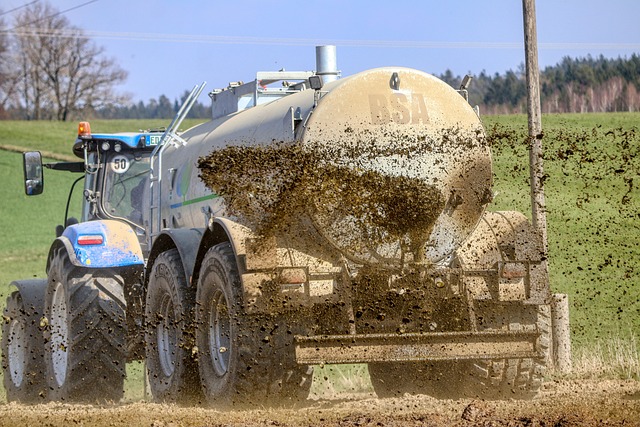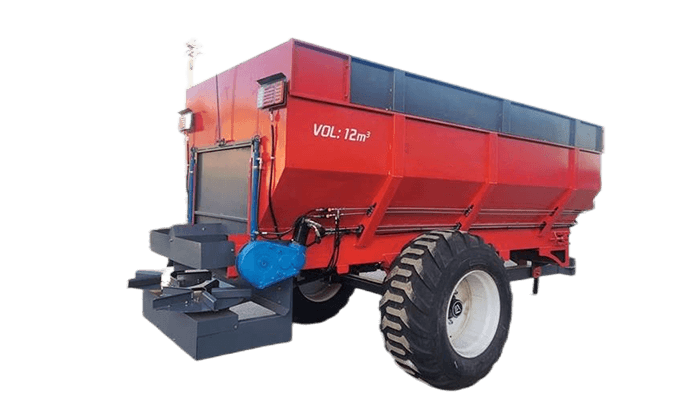In modern agriculture, fertilizer spreaders have become a valuable tool for farmers, making fertilizing faster, more even, and much less labor-intensive. Yet, with so many different fertilizer spreaders on the market, many farmers wonder which equipment will suit them best. Each type of fertilizer spreader has unique features, is suited to specific crops, and requires different operating techniques. Choosing the wrong one can affect crop yield and may lead to wasted fertilizer and soil issues.
Fertilizing is essential for healthy crop growth, and a fertilizer spreader is the key tool for efficient application. For precise fertilization, farmers need to match the spreader to their crop needs, field characteristics, and fertilizer type, and they need to carefully calculate how much fertilizer to apply per acre. Too little fertilizer will reduce crop growth, while too much will increase costs and waste valuable resources. Precision control over the amount of fertilizer is essential for maximizing efficiency.
In this article, we’ll explore the main types of fertilizer spreaders, offer tips for selecting the right model, and provide guidance on calculating and adjusting application rates. With these insights, you can confidently tackle the challenges of fertilizing and achieve efficient yield improvements.

Contents
Main Functions and Components of Fertilizer Spreaders
The primary role of a fertilizer spreader is to evenly distribute fertilizer across the field, ensuring that crops receive the nutrients they need at each stage of growth. Compared to manual fertilization, fertilizer spreaders not only improve efficiency but also make fertilizer application more uniform and precise.
A standard fertilizer spreader generally includes the following parts:
- Fertilizer Hopper: This determines the coverage area of each pass. Larger hoppers allow for higher efficiency since they reduce the need for frequent refilling.
- Spreading Mechanism: Different types of spreaders use various spreading mechanisms, such as centrifugal discs or nozzles, to evenly apply fertilizer across the field.
- Control System: Many modern spreaders include electronic controls, which adjust fertilizer output and operating speed, and some models even connect to GPS for precision application.
- Drive System: The drive system powers the spreader mechanism, often using a tractor’s power output. Some spreaders are self-propelled, making them ideal for smaller fields or specific crops.
Types of Fertilizer Spreaders and Their Ideal Applications
Different types of fertilizer spreaders excel in specific situations. Farmers can select the best equipment based on field characteristics, crop type, and fertilization needs:
Centrifugal Spreader
This type of spreader uses centrifugal force to distribute fertilizer across large fields, making it ideal for applying granular fertilizers. It’s simple, effective, and covers a wide area, making it a cost-effective choice for small- to medium-sized farms.
Row Fertilizer Applicator
Row applicators place fertilizer directly in the soil between crop rows, increasing fertilizer utilization and making them especially useful for crops with wider row spacing, like corn and cotton. For farmers looking to minimize nutrient competition from weeds, row applicators offer an ideal solution.
Liquid Fertilizer Applicator
These applicators work well for liquid fertilizers, making them ideal for fast-growing crops like vegetables and fruit trees. Liquid fertilizers absorb quickly and work particularly well for plants with extensive root systems.
Variable Rate Technology (VRT) Spreader
VRT spreaders use GPS or sensors to match fertilizer application to the specific nutrient needs of each area in the field. For fields with significant variation in soil fertility or for crops with varying nutrient requirements, VRT spreaders provide tailored, efficient fertilization that maximizes productivity.
Practical Fertilizing Tips: How to Accurately Calculate and Adjust Fertilizer Amounts
How Much Fertilizer per Acre?
Many farmers wonder, “How much fertilizer should I use per acre?” This depends on the crop type, soil conditions, and growth stage. Here are recommended amounts for common crops (per acre):
- Wheat: Nitrogen 10-15 kg, Phosphorus 5-8 kg, Potassium 5-10 kg
- Corn: Nitrogen 15-20 kg, Phosphorus 8-10 kg, Potassium 8-12 kg
- Rice: Nitrogen 10-12 kg, Phosphorus 6-8 kg, Potassium 10 kg
If soil testing isn’t possible, check with local agricultural services for recommendations, then adjust your spreader settings accordingly. For accuracy, test the spreader on a small area first to confirm that the application rate matches your needs.
Adjusting Fertilizer Amounts by Growth Stage
Fertilizer needs change with each growth stage, usually divided into base fertilizer and top dressing:
- Base Fertilizer: Apply before sowing or transplanting, using around 60-70% of the total fertilizer needed for early growth support.
- Top Dressing: Apply in stages based on growth phases (like seedling, ear formation, and filling stages), using about 30-40% of the total to ensure steady nutrient supply.
Modern fertilizer spreaders with electronic control settings allow you to set precise amounts per acre, avoiding the excess waste often seen with traditional methods.
Application Tips by Fertilizer Type
Each type of fertilizer has its own best practices for application and control:
- Granular Fertilizer: Use about 5-8 kg per acre, commonly for grains. Granular types work well with centrifugal and row spreaders.

- Liquid Fertilizer: Generally apply 40-50 liters per acre, diluted to meet crop needs. Liquid fertilizers absorb quickly, ideal for vegetables and fruit trees.
- Micronutrient Fertilizers: Apply in small amounts (0.5-1 kg per acre) to meet specific crop nutrient needs, often best applied with a liquid spreader for accuracy.
Choosing the Right Fertilizing Time
Timing greatly affects nutrient absorption. Here are key tips:
- Calm, Sunny Days: Avoid windy days to prevent fertilizer drift.
- Before Light Rain: Light rain can help fertilizer soak in, reducing loss.
- On Moist Soil: Moist soil improves nutrient uptake, so fertilizing on slightly damp ground is ideal.
Maintaining Your Fertilizer Spreader
Regular maintenance will keep your spreader in top condition and ensure efficient application:
- Clean After Each Use: Clear pipes and nozzles to prevent residue buildup that could cause corrosion.
- Lubricate: Lubricate moving parts regularly to reduce wear.
- Calibrate: Check and calibrate the application rate periodically to maintain accurate fertilization.
Choosing the right fertilizer spreader and controlling application rates wisely can boost both crop yield and quality, while also reducing fertilizer waste and protecting soil health. For small farms or large-scale operations, precision fertilizing effectively cuts costs and increases profits. With a well-chosen fertilizer spreader, you can achieve smart, precise fertilization management, making sure every bit of fertilizer counts.

